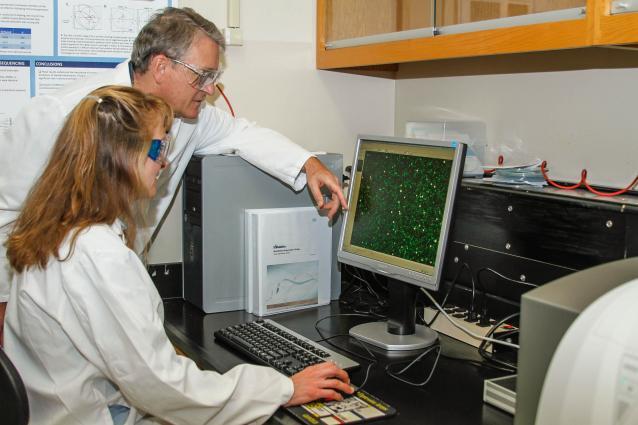Sample preparation is an important step required in many biological techniques such as PCR, gel-electrophoresis, DNA sequencing, etc. Accordingly, proper sample preparation, from simple to complex samples, is an important technique in the biomedical and research field. Some methods of sample separation include electrophoresis and isotachophoresis, however, these methods can be limited in resolving power by the dispersion of any aliquot of any individual species by diffusion of that species. Specifically, in the case of isotachophoresis, the diameter of the channel can affect sample separation.
The invention developed by LLNL researchers proposes to use staged isotachophoresis to improve sample separation. One of the problems with isotachophoresis is that there is a tradeoff between the diameter of the separation column and the ability to isolate a species into a detectable band. For example, wider diameter channels run faster, but narrower channels provide better ability to isolate one species into a detectable band. This technology uses staged isotachophoresis in which larger-diameter channels flow into one or more sequential channels with a reduced diameter (Figure). Although the width of the interface between species remains fixed, by reducing the channel width, the deleterious effect of diffusion across the interface is reduced.
- Eliminates the tradeoff between the diameter of the separation column and the ability to isolate a species into a detectable band
- Reduces the deleterious effect of diffusion across the interface
- Sample purification and preparation for:
- PCR
- Gel-electrophoresis
- DNA sequencing
- Single cell sequencing
- Biomedical field
- Medical diagnosis
- Sample characterization
LLNL has obtained a patent (US Patent 9,910,011) covering this technology (LLNL Internal Case # IL-12188).


